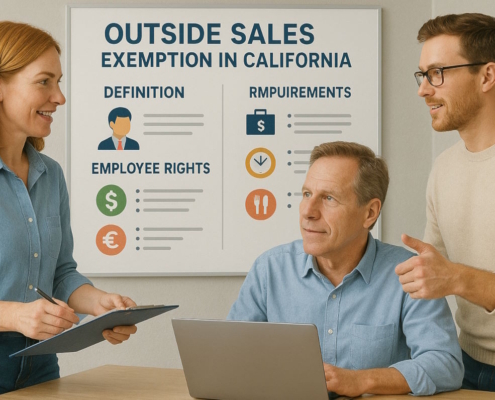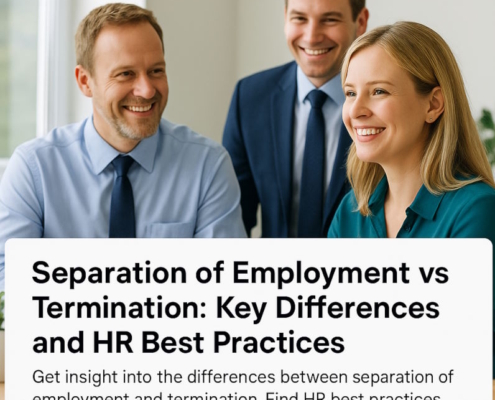What does California’s new paid sick time law say?
Senator Bill (SB) No. 616 was signed into law by Governor Gavin Newsom of California on October 4, 2023. It increases the amount of required paid sick time in California from 3 days (or 24 hours) to 5 days (or 40 hours). On January 1, 2024, the new rules about more paid sick time go into effect.
Background
To ensure that its workers have access to paid sick leave, California passed the Healthy Workplaces, Healthy Families Act of 2014, or HWHFA, in 2014. Since its enactment on July 1, 2015, the HWHFA has undergone minor revisions.
Starting from the first day of employment, qualified workers are eligible to earn paid sick time at one hour for every thirty hours worked. Anyone working in California for 30 days or more for the same company and who waits 90 days before receiving paid sick time is eligible to participate in the HWHFA. This includes both permanent, part-time, and temporary employees. If a worker asks for paid sick time, either in person or in writing, the company has to give them for the reasons listed below:
-Preventive care for an employee or a member of their family, as well as diagnosis, treatment, or care of a current medical condition.
-For a worker who has experienced sexual assault, stalking, or domestic abuse.
The following individuals are considered “family members” according to the law: a child, whether born into the family, adopted, foster, or legally guarded, a spouse, a registered domestic partner, a grandparent, a grandchild, a sibling, a designated person (the person the employee names when requesting paid sick days), and any biological, adoptive, foster, stepparent, legal guardian, or legal ward of a worker or the employee’s registered domestic partner or spouse. An employer has the right to cap how much paid sick time an employee can take in a year.
Even while these fundamentals are unchanged under bill 616, the new rules change a number of elements of HWHFA, necessitating, among other things, that businesses update their paid sick time policies in California in regard to frontloading, accrual, carryover, and usage caps to guarantee compliance.
Laws in California ban “use it or lose it” programs and require that paid sick time acquired one year roll over to the next. Nevertheless, California companies have the option to establish a threshold accrual cap. This means that employees will no longer accrue leave once they reach the specific cap amount, but they will immediately begin to accrue leave again after they use up their saved-up time and it falls under the cap. One further way the accrual ceiling works is it limits how much unused vacation time workers may transfer over from one year to the next.
Under the current HWHFA law, an employee’s built-up paid leave cannot exceed six days, or forty-eight hours, whichever is larger. Effective January 1, 2024, the cap will be increased to eighty hours or ten days, whichever is larger, as per the law passed under Senate Bill 616. As long as it satisfies specific criteria, employers are free to utilize an accrual technique other than the conventional one of one hour for every thirty hours worked.
As it stands, under HWHFA, employers are not required to use the standard accrual rate; instead, they can use any accrual rate they choose, so long as workers consistently put away at least twenty-four hours of time off by the end of their 120th day on the job, and they must maintain that amount by the end of each succeeding year’s 120th day. As of January 1, 2024, employees are required to have accrued a minimum of forty hours (or five days) of leave by their 200th day of work, and the same amount by the 200th day of each following year, according to SB No. 616.
Frontloading: The HWHFA permits companies to prepay a set amount of paid time off each year rather than using accrual and carryover. Currently, under HWHFA, companies who frontload are required to offer either twenty-four hours or three days, whichever is larger. Additional frontload requirements of forty hours or five days, whichever is greater, will be in force as of January 1, 2024, according Senate Bill 616.
IMPORTANT NOTICE: Some California local rules mandate that companies carry over frontloaded leave, even though state law permits employers to frontload time annually to prevent carryover.
Timeline of the Frontload Distribution: When employers frontload, they can make new hires wait longer than what the HWHFA normally lets them (an 89-day waiting time).
The current legislation under HWHFA states that businesses are required to provide their employees at least twenty-four hours or three days of paid sick time before their 120th day of employment ends.
Effective January 1, 2024, the following law, SB No. 616, will be in effect: not only must employers provide the frontloaded twenty-four hours or three days of paid leave to employees by the 120th day, but they must also guarantee that employees have a minimum of forty hours or five days of paid leave to use by the time they finish their 200th day of employment, which includes both the initial 120-day frontloading and the following 200-day frontloading. Therefore, instead of paying the full amount all at once, this new rule basically lets businesses pay the frontloaded amount in installments.
An employer can set a restriction on how many paid sick days an employee can utilize in a given year, calendar year, or twelve-month period, even though companies are required to let accumulated and frontloaded paid sick time carry over from one year to the next.
As it stands, the HWHFA permits companies to cap their workers’ annual paid leave to three days or twenty-four hours, whichever is higher. A new yearly limit of forty hours or five days, whichever is greater, will be in force as of January 1, 2024, thanks to Senate Bill 616.
Businesses and Workers Who Are Covered
Workers protected by a legally enforceable collective bargaining agreement, such as one that guarantees paid leave and stipulates binding arbitration, are exempt from the HWHFA’s current application. The law under SB No. 616 goes into effect on January 1, 2024. The changes made by SB 616 give workers covered by collective bargaining agreements some of the HWHFA’s protections, such as the procedural and nonretaliation protections.
There are eight separate California ordinances dealing with paid sick leave at the present time, and the state’s supreme law preempts these laws. Specifically, SB 616 states that certain provisions will supersede any contradictory local law. In particular, the new law partially supersedes certain paid sick leave laws in California that differ in their requirements regarding: leave advances, balance notification, employee notice for both predictable and unpredictable leave, sick leave pay rate, when such pay is due, and reinstatement of paid sick time upon rehire.
How Will SB 616 Impact Businesses in California?
Employers who have paid sick time policies that do not yet comply with or surpass the standards of Senate Bill 616 should examine and amend their policies promptly to guarantee compliance by the implementation date of January 1, 2024. Stay tuned for more instructions from the state labor department and from the jurisdictions that need to figure out if and how much SB616’s partial preemption impacts their paid sick leave ordinances. While you wait, don’t hesitate to contact an attorney if you need help revising your policies prior to January 1, 2024.































